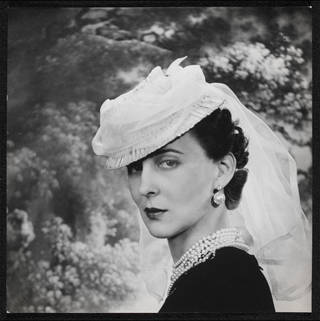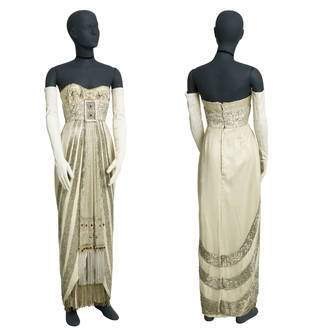Fashion photographer Sir Cecil Beaton (1904 – 1980) launched his career as a 'society' photographer in 1926 with an exhibition in London that won him an immediate contract with Vogue, where he worked for the next 30 years.
Beaton's fascination with glamour and high society prevailed throughout his life and in 1937 he became court photographer to the British Royal Family. He also became a successful set and costume designer for stage and film productions, most notably My Fair Lady (1956) and Gigi (1958).
A premier portrait photographer
Cecil Beaton began to pursue photography at a very early age. As a teenager he spent many hours attempting to recreate the look of glamorous society portraits using his sisters, Nancy and Baba, as models. Candid snapshots and studio portraits of Beaton by his contemporaries display his sense of style, his charm, vanity and vivacious personality.

His career took off in the mid 1920s, when he began to contribute photographs and illustrations to Vogue magazine. His first solo exhibition in London in 1927 established him as one of the leading fashion photographers and portraitists of his generation.

Beaton became sought-after on both sides of the Atlantic, photographing famous faces from Hollywood, the theatre world, society and the British royal family.

Stage and costume designer
Although best known as a photographer, Beaton also worked as an illustrator and designer for stage and film. His designs for productions such as My Fair Lady (1956), and Gigi (1958), defined the glamorous look of the era, as well as winning him three Oscars for costume and art direction.


The Cecil Beaton Collection
In 1971 Beaton organised an exhibition at the V&A, Fashion: An anthology by Cecil Beaton. He contacted designers and the well-dressed elite of Europe and America to lend a prestigious collection of 20th century haute couture clothing, including a significant number by the Spanish couturier Cristóbal Balenciaga. Many of the lenders to the exhibition, including Vogue editor Diana Vreeland and the Duchess of Windsor, subsequently donated these items to the Museum, greatly enriching our fashion collection.

Cecil Beaton's visitors' book
Cecil Beaton began to use a visitors' book in 1930 when he moved to Ashcombe House in Wiltshire. A 'who's who' of the 20th century, it contains the signatures of Greta Garbo, Henri Cartier-Bresson, Dali and the Queen Mother, among many celebrities and luminaries who visited Beaton at home. The book spans the 30s, the 40s, and all the way up to 1979. Beaton's family have kindly allowed us to take a look inside the book, and view the signatures, sketches and personal hand-written messages from his huge circle of family and friends.
This video was produced for the exhibition Queen Elizabeth II by Cecil Beaton, which ran at the V&A in spring 2012.
Find out more about Cecil Beaton.

